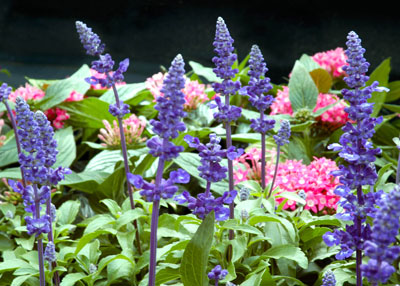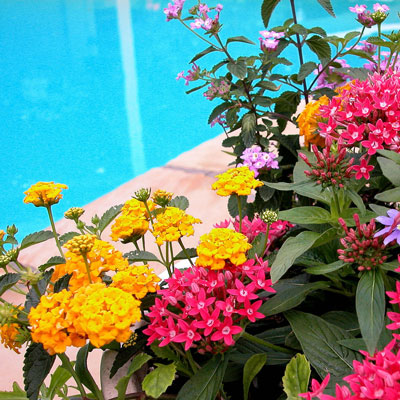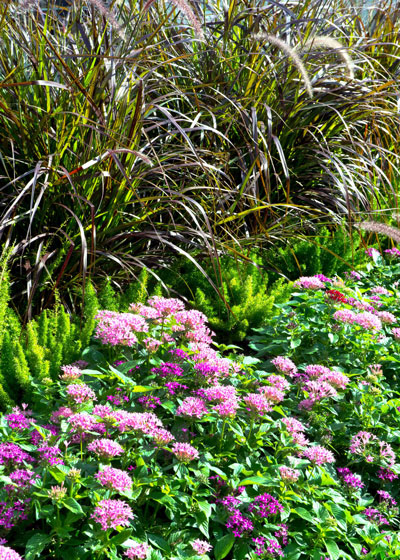Another Sperry Favorite for Summer
I am enchanted with pentas. In fact, I can’t imagine a summer without them in my own gardens. But it hasn’t always been that way.

Soft pastels of pink pentas harmonize with Salvia Victorias in foreground.
Back in Bryan/College Station when I was a kid, Dr. Roy Smith had been my pediatrician. He let me continue as his patient because we ended up visiting about plants. He loved to garden, and by the time I was 12 or 13, he invited me to walk through his yard so we could “talk plants.” That’s where I met pentas. That was the late 1950s, and I’ll never forget his comment, “I could really like these if they didn’t grow so tall and if they’d just bloom a little better.”
Well, Dr. Smith would be tickled by the pentas available to us today. They offer continuous bloom in shades of red, pink, white, purple and lavender, many with contrasting two-tones. And height is no longer an issue. Many varieties stay at 12 or 15 inches, making them perfect for both beds and containers. They can be planted in mid-spring, knowing that they’ll be colorful until frost. Breeders have taken a nice plant and turned it into a rock star!

Rosy-red pentas blend well with trailing lantanas – poolside in North Texas summer.
You’ll see pentas being grown in full sun, but I’m timid about planting them against a hot, reflective masonry wall. They do need sunlight, however, so I use them in spots that get 5 or 6 or more hours of direct sunlight daily.

Purple fountaingrass in background grows to be 20 to 24 inches tall. Compare that to the short heights of modern pentas.
Pentas bloom on new growth, so it’s critical that you prepare their soil carefully prior to planting. That means adding several inches of organic matter (sphagnum peat, compost, rotted manure, finely ground pine bark mulch, etc.) and, for clay soils, 1 inch of expanded shale as well, then rototilling to 10 to 12 inches. If you’re growing pentas in pots, use the highest quality potting soil you can find.

Keep pentas growing vigorously to ensure heaviest possible bloom.
Buy pentas in bloom in 4-inch or quart pots, and space them 10 to 12 inches apart, depending on the variety. Use a water-soluble, high-nitrogen lawn food to get them off to a quick start.
About the only insect problem I’ve ever had on my pentas was an outbreak of hornworm (singular) a couple of summers ago. I relocated it somewhere less strategic in my garden, and life went on seamlessly.
Beyond butterflies, hummingbirds love pentas as much as gardeners do. Yet another reason to be sure you have this grand little plant at your place. Nurseries have good supplies currently. Buy plants that have been growing in the same amount of sunlight you’ll have for them, and plant them as soon as you get them home.

Tiger swallowtails seek nectar from pentas’ tubular flowers.
